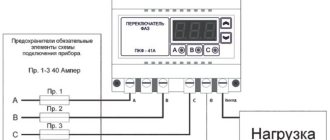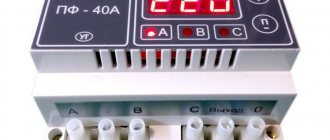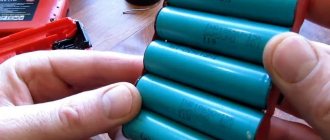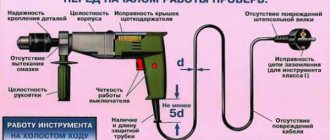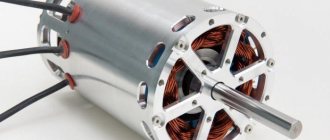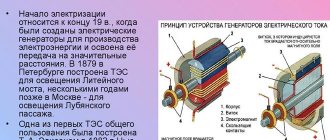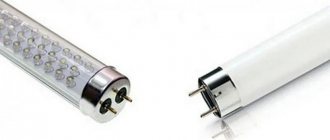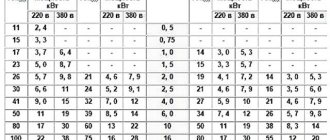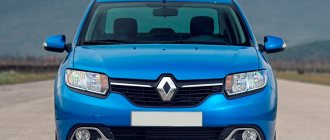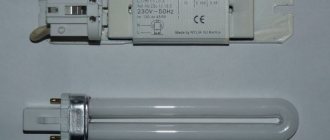The commutator unit of the electric motor is necessary to transmit electricity to the armature windings. Since the armature produces a rotational movement during operation, transmission is carried out through a special contact. To organize a moving contact in all household and industrial motors, metal plates are not used. This is due to high speeds, at which metal-to-metal friction would produce additional heating of the working surface and rapid depletion of the collector. Therefore, graphite or coal was chosen as the contact. It got the name - electric brush.
Motor brushes
A sliding contact, designed for supplying and discharging electricity to collectors or ring contacts of all types of electrical machines (electric motors and generators), is called an electric brush.
Electric motor brushes are produced both with and without metal conductors. The wire is secured in the brush by flaring, pressing, or soldering. Brush current conductors come in the following brands:
- MPShch – a special type of stranded wire, made of copper wire;
- ПШ – flexible type of copper wire weave;
- PShchS is a universal wire with increased flexibility.
Contact tips are provided on the supply wire. Using them, the wire is secured with a brush holder bolt. Tips come in fork, flag, double and plate types.
Explanation of markings
Domestic marking of brushes for electric motors includes complete information about the product, for example:
EG-14 20*32*40 K1-3
The brush marking will look like this:
- EG-14 - the material from which the brush is made;
- 20*32*40 - dimensions;
- K1-3 - configuration (determined from the table).
At the same time, there is additional information in the reference books, which indicates the parameters for each type of brush.
According to the information on purpose and dimensions in the reference books, you can select brushes for power tools that use a commutator motor. It should be taken into account that their markings are different.
For a rotary hammer, drill, mixer and grinder there can be either the same or different brands of brushes, since these devices have different loads and speeds. This must be taken into account when replacing, and not selected only by size.
If the engine has special design features, you can specify the required parameters when ordering:
- The number of current-carrying conductors, as well as their length and cross-section.
- Configuration of connection contact and lining.
Often, power tool manufacturers provide a table of brands or catalog numbers, which displays information about which brush is suitable for which device. Below is a compliance table for power tools, which indicates the type of tool and the marking of the installed brushes.
The following two tables will help you select components for Bosch power tool motors. The top column shows the types of brushes marked by numbers (#1, #2, #3 ... #15) and their catalog numbers; vertical columns indicate the models of power tools and also their numbers.
When selecting, you need to have an idea of the difference between carbon brushes and graphite and other types of electric brushes. Incorrectly selected components can lead to failure of the commutator, and the electric motor will quickly become unusable, or simply the newly installed parts will quickly wear out.
Now you know what markings exist for motor brushes and how to choose the right electric brushes for the right tool. We hope the information provided was useful and interesting for you!
Types of brushes
There are several classes of brushes that satisfy different switching conditions:
- Graphite brushes. They are made on the basis of graphite with the addition of filler in the form of soot and other substances. Brushes are intended for light commutation in generators and engines. The grades EG61A and G20 are produced.
- Carbon-graphite type. Low strength brushes for light mechanical loads. Brands G21, G22.
- Electrographite type. Brushes of increased mechanical strength, saturated with carbon. Perform switching of medium complexity. Withstand high current loads. There are brands EG2A, EG74, EG14, EG4, EG841.
- Metal-graphite type (copper-graphite brushes for electric motors). The main component of the brush is copper, tin and graphite powder. They come with different fillers. The brushes are highly durable and do not allow gas or liquid to pass through. Applicable in high and medium complexity switching conditions. Ensure the functioning of low voltage generators. The brands are MG, MGS, MGS 5, MGS 20, MGS 51, MGSOA, MGSO, MGSO1M, M1A, M1.
The described brush contacts are applicable in industry; brushes of the G33MI, G33, G30, G31 brands are produced for household equipment.
Types of products
- graphite - made from graphite with various fillers, such as carbon black. Their purpose is to provide easy switching in motors;
- carbon-graphite - since they are not very strong, they are used in devices with the most minimal mechanical load;
- electrographite – are high-strength products. Such brushes guarantee medium-level contact with increased current loads;
- metal-graphite with graphite powder, copper or tin fillers. The main distinctive properties of such products are work with complex contacts, a high degree of protection against the penetration of various liquids and gases, and increased strength.
Do-it-yourself elevator in a private house: technique, necessary materials and tools, step-by-step operating instructions and expert advice
Electrographite
| Brand | Hardness, kPa×104 | Electrical resistivity, µOhm×m | Nominal current density, A/cm2 | Maximum permissible linear speed, m/s | Transient voltage drop across a pair of brushes, V |
| EG2A | 7-21 | 2-8 | 11-27 | 50 | 0,9-1,9 |
| EG4 | 2-6 | 13-35 | 15 | 60 | 0,9-1,9 |
| EG8 | 8-34 | 36-50 | 11 | 42 | 1,0-1,8 |
| EG14 | 8-30 | 20-38 | 12 | 45 | 1,1-2,1 |
| EG141 | 1-30 | 20-40 | 11 | 40 | 1,1-2,0 |
| EG61AK | 20-65 | 36-60 | 19,5 | 60 | 1,7-3,2 |
| EG74 | 15-49 | 35-75 | 15 | 50 | 1,2-2,4 |
| EG74AK | 20-40 | 35-75 | 12 | 60 | 1,3-2,5 |
| EG75 | 35-65 | 13 | 60 | 1,5-3,2 | |
| EG841K | 40-80 | 17 | 50 | 1,7-3,7 |
Metal-graphite
| Brand | Hardness, kPa×104 | Electrical resistivity, µOhm×m | Nominal current density, A/cm2 | Maximum permissible linear speed, m/s | Transient voltage drop across a pair of brushes, V |
| 611ОМ | 6-12 | 8-28 | 15 | 40 | 0,7-1,7 |
| M1A | 8-25 | 2-8 | 12 | 60 | 0,8-2,0 |
| MG | 4-14 | no more than 12 | 30 | 30 | no more than 0.4 |
| MG4 | 10-22 | no more than 1.3 | 24 | 30 | no more than 1.6 |
| MGS5 | 6-20 | 2-15 | 45 | 16 | 0,7-1,9 |
| MGS20 | 6-25 | no more than 0.4 | 120 | 15 | 0,3-1,0 |
| MGSO | 6-20 | 2-15 | 30 | 30 | no more than 0.35 |
| MGSO1M | 6-20 | no more than 0.8 | 80 | 15 | 0,1-0,5 |
| MGSOA | 14-45 | no more than 0.3 | 100 | 15 | 0,1-0,45 |
| M1A | 8-25 | 2-8 | 12 | 33 | 0,8-2,0 |
| MGSO51 | 6-20 | 2-13 | 80 | 15 | 1,2-2,5 |
Carbon graphite
| Brand | Hardness, kPa×104 | Electrical resistivity, µOhm×m | Nominal current density, A/cm2 | Maximum permissible linear speed, m/s | Transient voltage drop across a pair of brushes, V |
| G3 | 7-19 | 8-20 | 12 | 60 | 1,9 |
| G20 | 35-100 | 15 | 40 | 2,9 | |
| G21 | 20-60 | 150-450 | 8,5 | 30 | 2,5-5,5 |
| G21A | 20-60 | 150-400 | 10 | 25 | 3,0-6,0 |
| G33 | 18-64 | n/a 900 | 10 | 35 |
Brushes selection criteria
Place text to fit the width of the page
To select the right brushes, you need to know and take into account such parameters as:
- Brand and material from which the contact is directly made
- Dimensions (length, width, depth). In this case, the length may have slight fluctuations in the direction of decreasing or increasing.
- Type or configuration of the part. The design is determined as follows: whether there is a conductor or not, the material from which it is made, the place where it should be attached, a ring or plug as a tip for connection.
How they can be useful
These products supplied by us are used in various industries. The main task of the devices is to transmit electric current from the power source directly to the rotating commutator of the engine, ensuring its stable and non-stop operation.
All presented products are highly reliable due to the high degree of precision in the connection of mechanical parts and the use of wear-resistant materials in brush designs. These models do not lose too much energy in the sliding contact and do not spark, ensuring a reliable switching process. Brush-collector units are considered consumables, but the models purchased here are designed for a long period of operation.
Advantages of purchasing electric brushes from our
- Each original model produced by us is designed for a strictly defined area of application.
- All offered electric brushes for electric motors have a high degree of wear resistance.
- When purchasing products from us, you buy them from the manufacturer, avoiding overpayments in the form of unreasonable trade markups by intermediaries.
- It is possible to produce batches of products according to the client’s individual order, in accordance with his technical needs.
- The high quality of all products produced using modern equipment is guaranteed.
If necessary, managers will assist you in choosing, introducing you to the technical characteristics, features of installation and operation of the equipment. In addition, we provide convenient methods of payment and delivery of orders, and also cooperate with both wholesale and retail customers.
Favorable prices
Flexible discounts
A wide range of
Delivery across Russia
Satisfied clients
Quality products
Brush Contact Selection
The most important thing when selecting electric motor brushes is to know the parameters of the used brushes. In addition to geometric dimensions, the new brush must match the grade of graphite, type and cross-section of wire. It is not necessary to take the same brand as the original, but the hardness of the electric motor brush and operating modes must match. The thickness of the wire should not be less than the original, and the flexibility should be consistent. Main mistakes when selecting a brush contact:
- Installing a harder graphite contact where softer ones were used. The result can be rapid wear of the manifold.
- Installation of “universal” brushes everywhere. This may interfere with the operation of the device.
- When purchasing a brush, focus on the graphite markings on the side of the old electric motor brush. Marking graphite is not marking contact parameters!
Features of selection
When planning a purchase, you should study in detail how to choose brushes for an electric motor. If the installed brushes are worn out, then it is advisable to determine their main parameters, which will help in the future to correctly replace the devices. Geometric shapes, size, and grade of graphite are also important.
If you choose graphite brushes, keep in mind that they can be hard or soft. At the same time, the copper on the collector also differs in hardness. When you choose mismatched options, one of the elements will fail faster due to high friction and wear.
Brushes also differ in the level of active resistance
This is important to know for calculating winding parameters and PRU characteristics. The brush assembly must work in harmony. Therefore, it is necessary to take into account the features of the clamping block, the characteristics of the guides and contact groups
Therefore, it is necessary to take into account the features of the clamping block, the characteristics of the guides and contact groups.
Reliability of operation depends on the degree of pressure. If the pressure is excessive, the commutator and brush block may overheat, and if the pressure is insufficient, sparking may occur.
The photo of brushes for electric motors shows their different modifications. However, not all of them can be used in specific conditions. For example, it is not recommended to install generator modifications of copper-graphite products in power tools. Excessive overheating and high currents will lead to problems with the performance of the windings.
Why do brushes spark?
The sparking of brushes sliding along the commutator is natural, because at the moment of transition from one lamella to another an arc micro-discharge occurs. If the engine is functioning correctly, all elements are in good working order and in compliance, it is barely perceptible to the eye. But if the electric motor brush sparks strongly, the reason indicates a malfunction. Ignoring this process may result in failure of the anchor.
The reasons why brushes spark are as follows:
- Formation of carbon deposits or contaminants on the collector. It is possible that when the engine has been running for a long time without maintenance, a thin film of carbon deposits has formed on the contacts of the commutator. It has increased resistance, which leads to sparking. You can fix the problem by treating the commutator with zero-grit sandpaper (in the direction in which the brushes rotate).
- Shorting adjacent collector contacts with graphite dust or fine copper powder. In this case, currents increase in the circuits, which leads to strong sparking. The jumpers should be carefully removed with a sharp object.
- Incorrect selection of brush parameters. As a result of the contact resistance mismatch, sparks will also occur at the commutator. The graphite brushes need to be replaced based on the technical documentation of the engine.
- Production of brushes.
- Interturn short circuit in armature windings. Check the armature and replace if faulty.
We disassemble the washing machine
Operating principle of the electric motor
To replace the brushes of the electric motor of the washing machine, you need to prepare for the upcoming work by studying the instructions and the layout of the main components. All operations must be carried out with the utmost care. When disassembling, try to remember well the location and method of fastening the affected components.
Expert advice! It will be useful for a beginner to take a photograph of the internal structure of the opened machine in order to know exactly what and where should be after assembly.
Required Tools
To get to the motor and replace the brushes, you will need:
- Screwdriver Set;
- spanners;
- pliers;
- sandpaper.
Preliminary disassembly
All repair work on household electrical equipment must be carried out when it is completely disconnected from the network. First, remove the plug from the outlet. In preparation for replacing brushes you will need:
- disconnect the automatic machine from the supply and sewer water pipes;
- unfold the unit in order to achieve convenient access to its rear side;
- remove the back cover, which is usually secured with self-tapping screws;
- dismantle the belt connecting the electric motor to the drum shaft for loading laundry, which will require pulling it towards you while carefully rotating the pulley;
- disconnect the motor from the power circuit by opening the corresponding connector;
- Unscrew the bolts securing the engine to the frame and remove it.
Need to know. Models from different companies may have their own design features. That's why you studied the manufacturer's instructions before starting work.
Collector motor diagram
Replacing brushes on a washing machine
It is better to carry out work with a dismantled engine on a table in conditions of sufficient lighting. The procedure for replacing brushes is as follows:
- place the motor on its side to gain easy access to the brush installation location;
- unscrew the mounting bolts;
- remove the brush from the socket, remembering the direction of sharpening the tip;
- repeat the above operations with another brush;
- inspect the rods (if there are no visible damages and the length of the graphite exceeds 1.5 cm, then the reason for the failure is not them);
- check the condition of the engine manifold by sanding all irregularities;
- install new brushes, securing them in the desired position with standard bolts.
Do not forget! The bevel of the brushes should provide the maximum area of their contact with the commutator. If this is not the case, you need to rotate them 180 degrees.
Shutdown
Reinstalling the engine is done in reverse order. To do this you need:
- place the motor on the frame, securing it with bolts to the mounting holes;
- connect the power cable;
- tighten the belt by slightly turning the motor and drum shafts;
- replace the back cover;
- restore the water supply and sewerage connections and insert the plug into the socket.
Any repairs made must end with startup tests. They will consist of the initial start-up of the washing machine in one of the gentle modes. In this case, you should make sure that it is in good working order and listen to the noise of the motor. The brushes will take some time to grind the surfaces to the shape of the commutator. In such a situation, it is possible to slightly increase the operating volume without particularly sharp sounds or increasing vibration of the unit.
Advice! For the first few washes after replacing the brushes, it is not recommended to load the drum to the limit to avoid triggering the emergency protection.
If you are unsure of your ability to correctly determine the cause of the breakdown and replace the brushes on the electric motor of your washing machine, then use the services of a service department. This kind of work is done fairly quickly and is paid at minimal rates. Most likely, knowing the make of your car, the technician will arrive with the necessary spare parts, and you won’t have to look for them yourself by calling or visiting stores.
Watch a video on how to replace the brushes in your washing machine yourself
